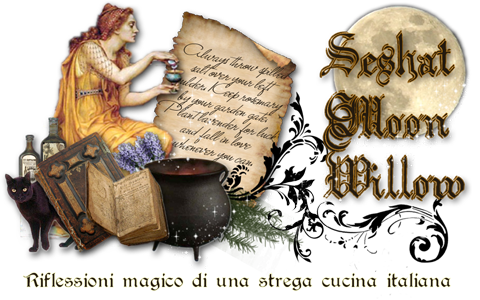Kitchen Witchery is a simple, eclectic Pagan practice that can pull its resources from a variety of religions and practices. It is does not involve a lot of ritual or set up; it is earth-based and focuses on hearth and home. The center of life for a Kitchen Witch is family, hearth and home. They may call themselves, Pagan, Wiccan or simply Witch. Often a Kitchen Witch can practice and perform their magick with very little notice or speculation from the outsiders because it is such a low-key practice. It’s not that they are hiding what they are; it’s just that there is not a lot of pomp and circumstance to what they do.
Kitchen witches use a variety of spells or resources to accomplish their means and desires; however, they tend to keep their roots firmly planted in anything that is earth and home-based. Spells involving stones, crystals, string or knot magick, candles, divining, use of the elements, herbs, essential oils and tea reading tend to make up the majority of his/her spell book.
Everyday kitchen items are used as altar or magickal items. A good example is a wooden spoon. The wooden for a Kitchen Witch is his/her wand; a cup or bowl becomes the chalice or vessel, kitchen knives used as athames; a broom can be used as a staff; and the crockpot (slow cooker) used as the cauldron. A shelf on the wall, a kitchen counter, a baker’s rack, table, or cutting board can be used as an altar. And, of course, what Kitchen Witch is without a mortar and pestle, none that I know. It is always best to use items made of natural materials such as straw for the broom or a wooden spoon; however, for items that do not come in natural materials, it is fine to use what is available. The Kitchen Witches’ magick comes from within not without. The following are some natural materials to keep in mind: glass, wood, metal, ceramics, and pottery.
Generally speaking, Kitchen Witches love to cook and love their kitchen. They take great pride in their food and recipes and will do nothing to jeopardize this. The Witch will imbue the foods with magick. This does not mean that they add some kind of foreign objects to the food or add anything that could be a potential health risk. Quite the contrary, they often use food to heal, to bring out emotions, or use it to bring people closer together. For example, a short incantation or prayer could be said over a simmering pot of chicken noodle soup to bring forth healing powers for the person who is intended to eat it. A practicing Kitchen Witch might also use foods or herbs for healing, beauty treatments, as protective spells around the home, or other such practices that go beyond just food. Cleaning is often a ritual of which they may have spells involving the use of a mop or broom, just as a Wiccan or Pagan will clean the space they use for rituals prior to doing a spiritual cleansing. I have a very set way that I clean my kitchen and at the end I use either sage or sweet grass to cleanse as I thank the Goddess and God for all their abundant blessings.
Symbols you will often find for the Kitchen Witch involve household items such as a cauldron, broom (besom), corn dollies, witch figurines and pentacle.
Generally, a Kitchen Witch honors Goddesses or feminine aspects because in the pastimes the kitchen was the responsibility of the woman (or women) of the household. The following are some common Goddesses associated with Kitchen Witchery:
Brigid, a Celtic goddess associated with fertility, creativity, marital arts and healing.
Hestia, the Greek Goddess of hearth, fire and family (Roman name is Vesta)
Hera, a Greek Goddess who is often thought to be the “mother” of the other Gods/Goddesses. She and Zeus were married and Hera is generally thought to be the Goddess of married women.
Hecate, this Goddess is often associated with wilderness and childbirth and is often thought to be a Greek Goddess.
The Kitchen Witch also works with the elements. There are 4 elements: earth, air, fire and water, however, many practices also consider a fifth element: spirit. A Kitchen Witch cooks which is an act that often utilizes all of the elements: water for cooking, heat (fire) for cooking, steam (air) from the food and the food (which comes from the earth). There are certain meals that can also be prepared that represent the 4 elements as well. Vegetables contain a lot of water and would represent water, meat or bread would represent earth and so on. Colors of foods can also represent the elements such as foods in red, orange and yellow would represent fire. There are so many different ways to represent the elements that it can be very fund and creative to find new ways to work with the elements this way.
In conclusion, the kitchen is the heart of the home and most often the place where all the family gathers; however, a Kitchen Witch will view the entire home and yard as a sacred space rather than having just one room that is designed or fitted for ritual.


















































No comments:
Post a Comment